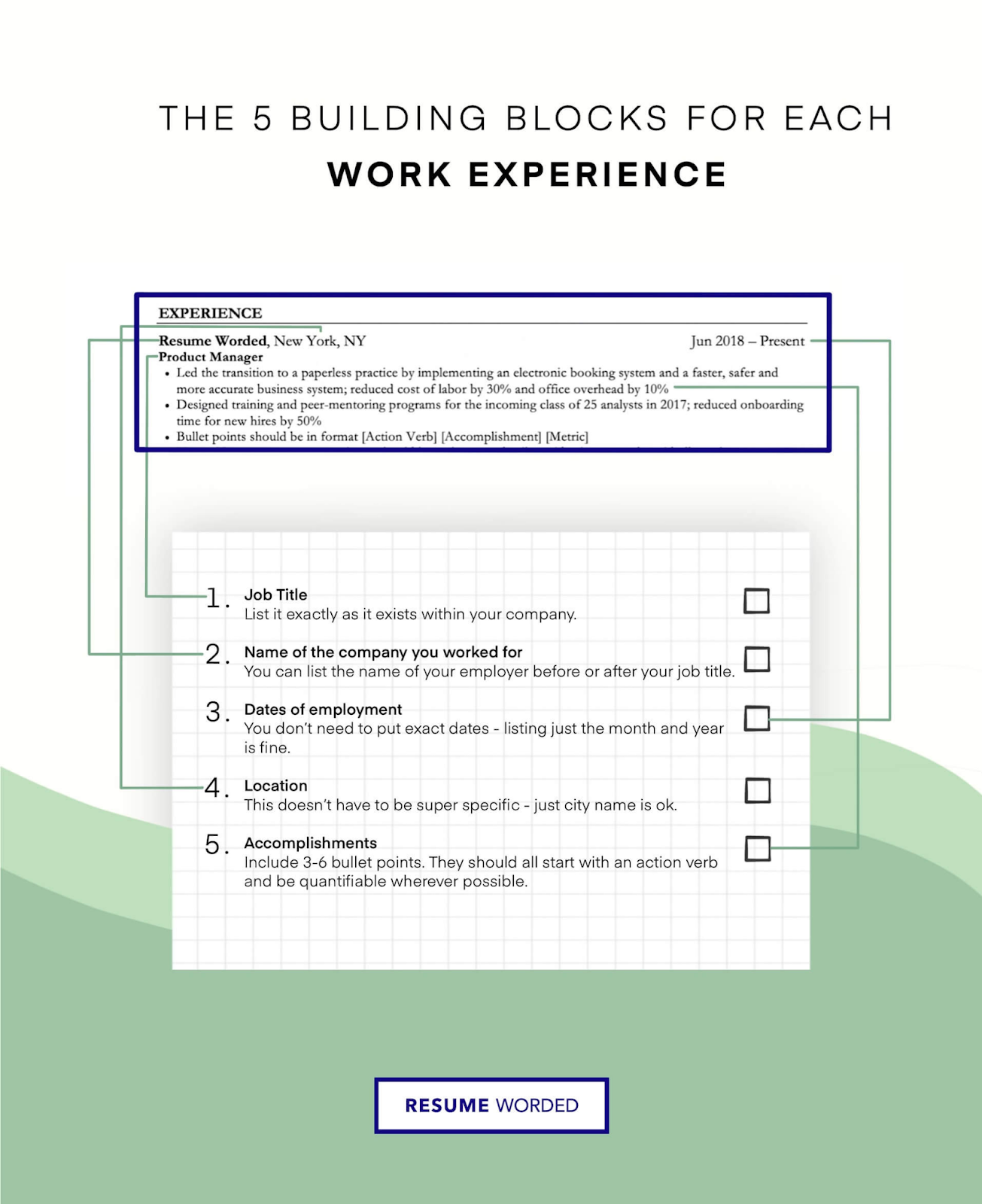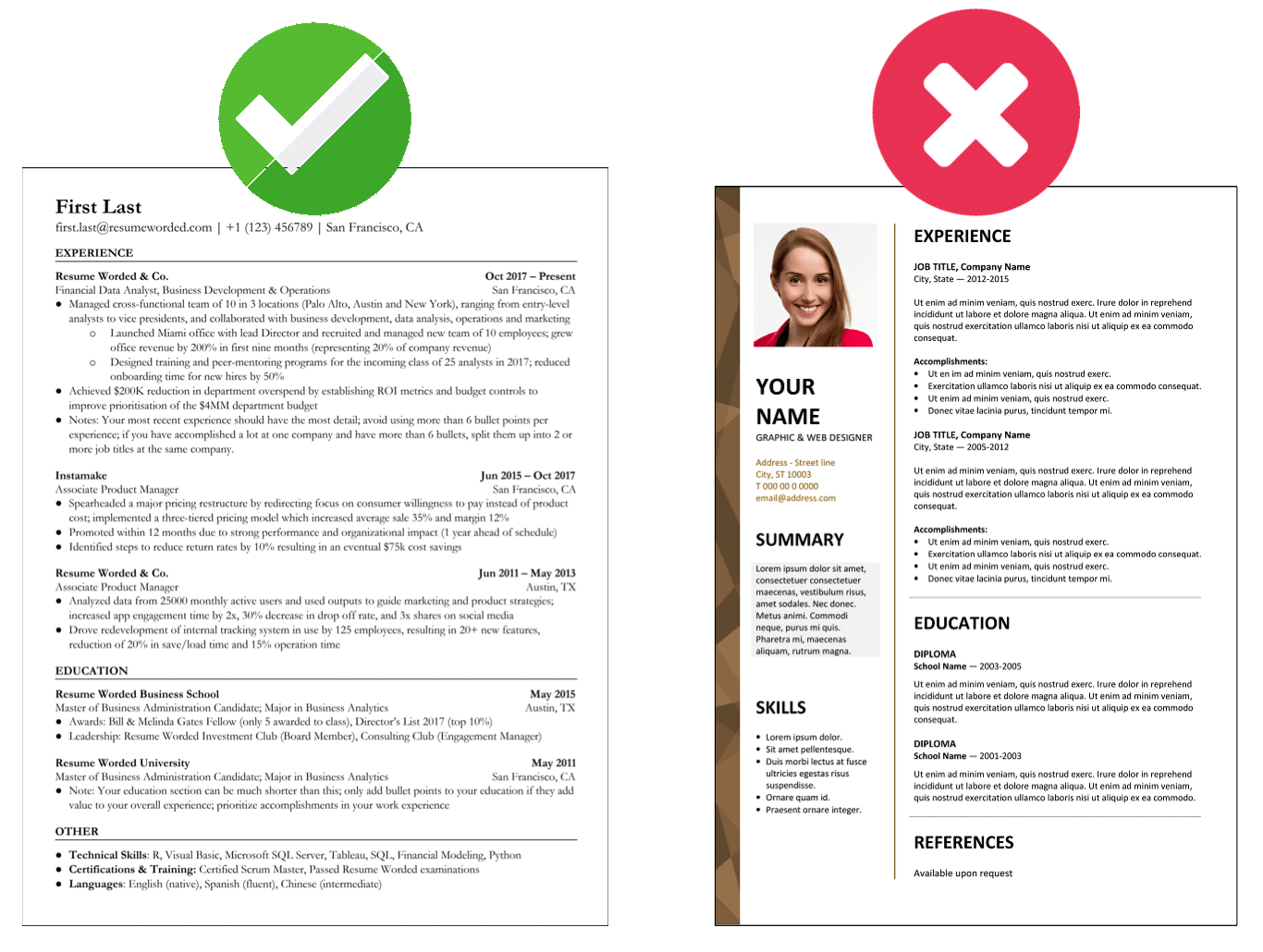In the competitive job market of 2024, we are all trying to write the best resumes we can, looking for ways to boost our chances of winning that all-important interview, knowing a few small changes can make all the difference.
Improving your resume may seem daunting, but it doesn't have to be complicated or time-consuming.
The key is to ensure everything on your resume is directly relevant to the job you’re applying for. Cut any fluff or outdated experience, and highlight your skills usingkeywords in an easy-to-read layout. Everything should be short, sharp, and to the point, leaving the recruiter in no doubt that you are the right person for the job.
For professional feedback on improving your resume, scan your resume using our AI-powered resume checker that will analyze your resume for brevity, impact, word choice, and style, and provide instant advice on how to optimize your resume.
Below, we go into detail about how to improve your resume's content, formatting, and visual appeal, with links to other helpful tools to make editing your resume fast and easy.
Keep it short: Less is more
Recruiters generally spend less than 7 seconds reading your resume, so every word counts. When it comes to resumes, less is more.
Try to condense your resume to one page if you can, two if you need it, by removing any redundant skills, irrelevant interests, or outdated work experience. Instead, focus on key, relevant skills and cherry-pick your work experience that best suits the job posting.
Use bullet points, not paragraphs
Most recruiters will skim-read your resume, pick out the relevant points, and gloss over the rest. To make their job easier, convert any long paragraphs to short, concise bullet points to improve the readability of your resume.
Here is an example of a long-winded, wordy paragraph:
At ABC company, I was responsible for managing a team and overseeing various projects to ensure they were successful and completed on time. I also liaised with clients and vendors to facilitate communication and project evaluation.
And here is how that paragraph looks when condensed into bullet points. Easier to scan, to the point, and more impact in fewer words.
- Led a team of 5 employees to deliver projects on schedule and increase overall efficiency by 30%
- Built and maintained relationships with over 15 clients and vendors, improving communication and project delivery
When creating your bullet points, start with a strong action verb to catch the reader’s attention, and aim for 4-6 bullet points per work experience/role. Check out our 300+ sample bullet points to get you started, and use our bullet point builder to analyze your statements and get suggestions for where and how to improve.
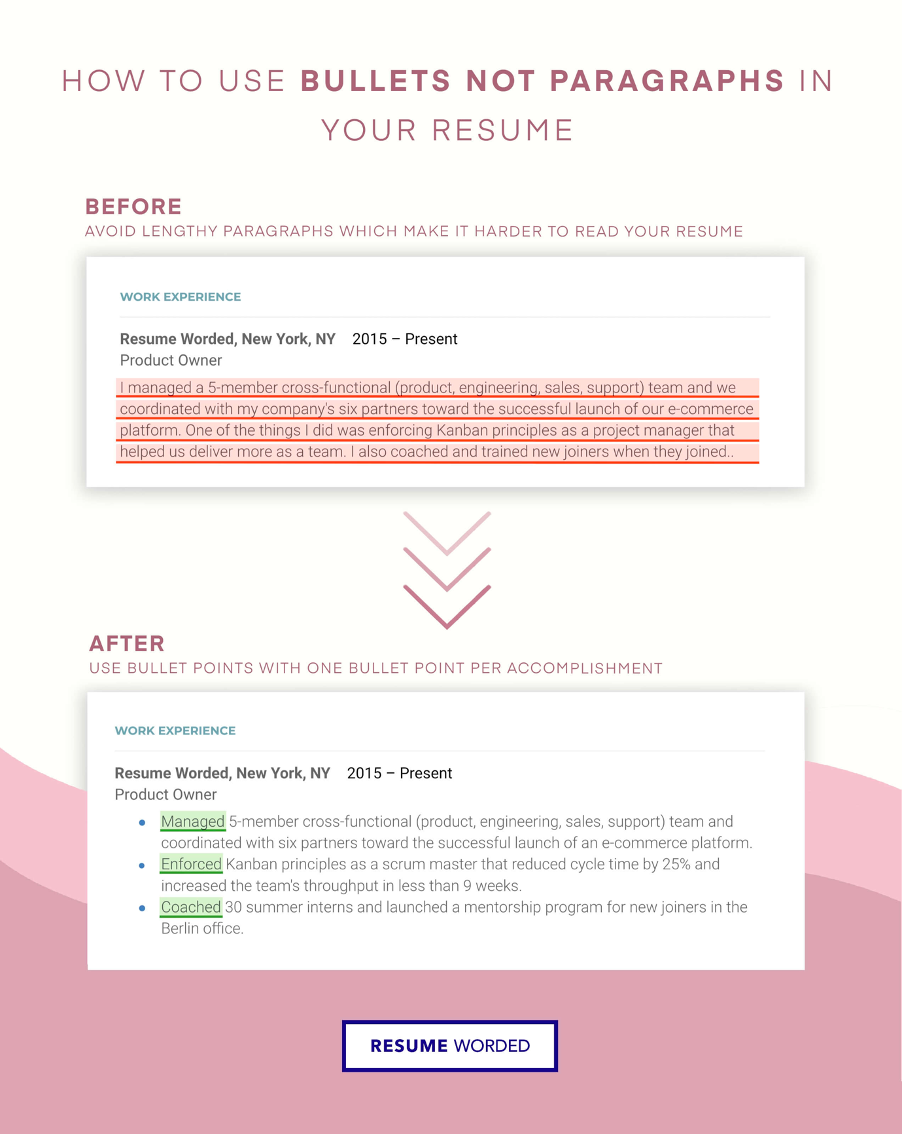
Include relevant keywords
Keywords are crucial to a high-performing resume, as many employers in 2024 use Applicant Tracking Systems (ATS) to filter resumes based on keyword criteria.
Keywords are specific words, usually hard skills and phrases, listed in the job posting that reflect the skills and experience the employer is actively looking for. Including these exact terms on your resume will highlight your understanding of the job requirements and ensure you get past the ATS filters.
For example, suppose a job posting mentions project management and team leadership. Your resume should include these exact terms, as well as related keywords, such as managed, lead, oversaw, and mentored. For help identifying keywords, input the job description into our keyword finder to analyze the posting and determine a list of keywords to include in your resume.
Target your resume to each application
One-size-fits-all is no longer true in the resume world. Recruiters want you to target your resume to each application by including only skills and experience that are specifically relevant to the job. This helps a recruiter see how your skills directly relate to the position they are hiring for.
Include keywords, hard skills, and work history that directly reference the job description, and update your resume summary, education, and qualifications to showcase sought-after skills in that particular field.
Scan your resume using our Targeted Resume tool to see if your resume is well-matched to the job you are applying for, and make sure to check over and edit your resume before each new submission.
Quantify your achievements
Quantifying your resume with specific numbers and data is one of the most effective ways of improving your resume's impact and catching a recruiter's attention.
Quantifying simply means using numbers, statistics, and metrics to demonstrate your skills.
For example, instead of writing that you “improved sales,” say that you “improved sales by 15%”. Instead of saying that you “managed a successful team,” state that you “led a team of 15 employees to improve customer satisfaction by 20%”.
Using specific examples and achievements to quantify your skills helps demonstrate the relevance of your work experience, providing concrete evidence of your abilities and a clear measure of your success.
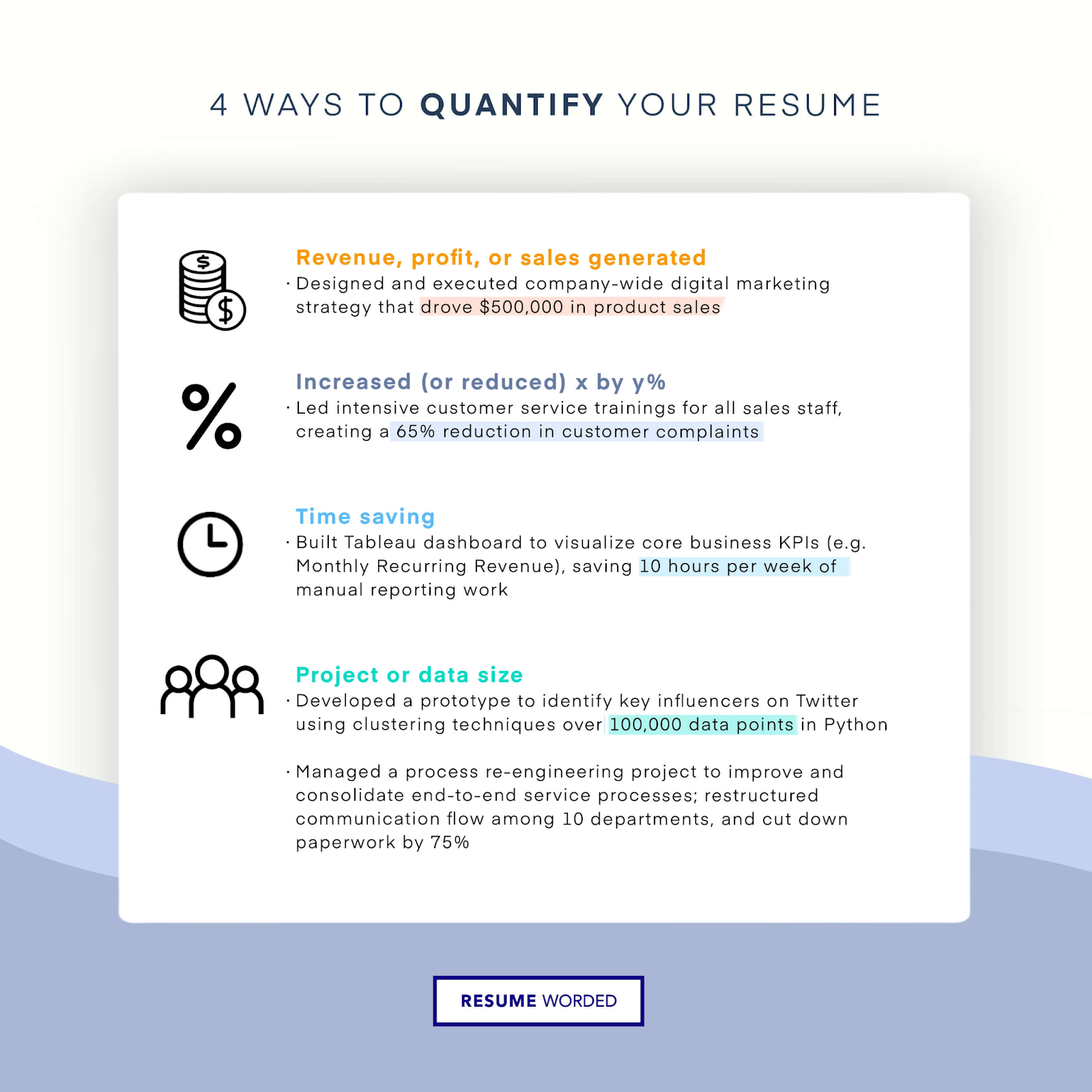
Use power phrases
Power phrases are action-oriented phrases that showcase your skills and experience in a memorable way. In short, they are the perfect way to hit all the above points and make your resume stand out from the rest.
To create a power phrase, combine a strong action verb with a particular task or project that demonstrates the skill you are trying to showcase. Then, add a quantifiable metric that exemplifies this skill and your experience with it. Check the impact of your statements by uploading your resume to our Score My Resume tool, to get feedback on your word choice, brevity and style.
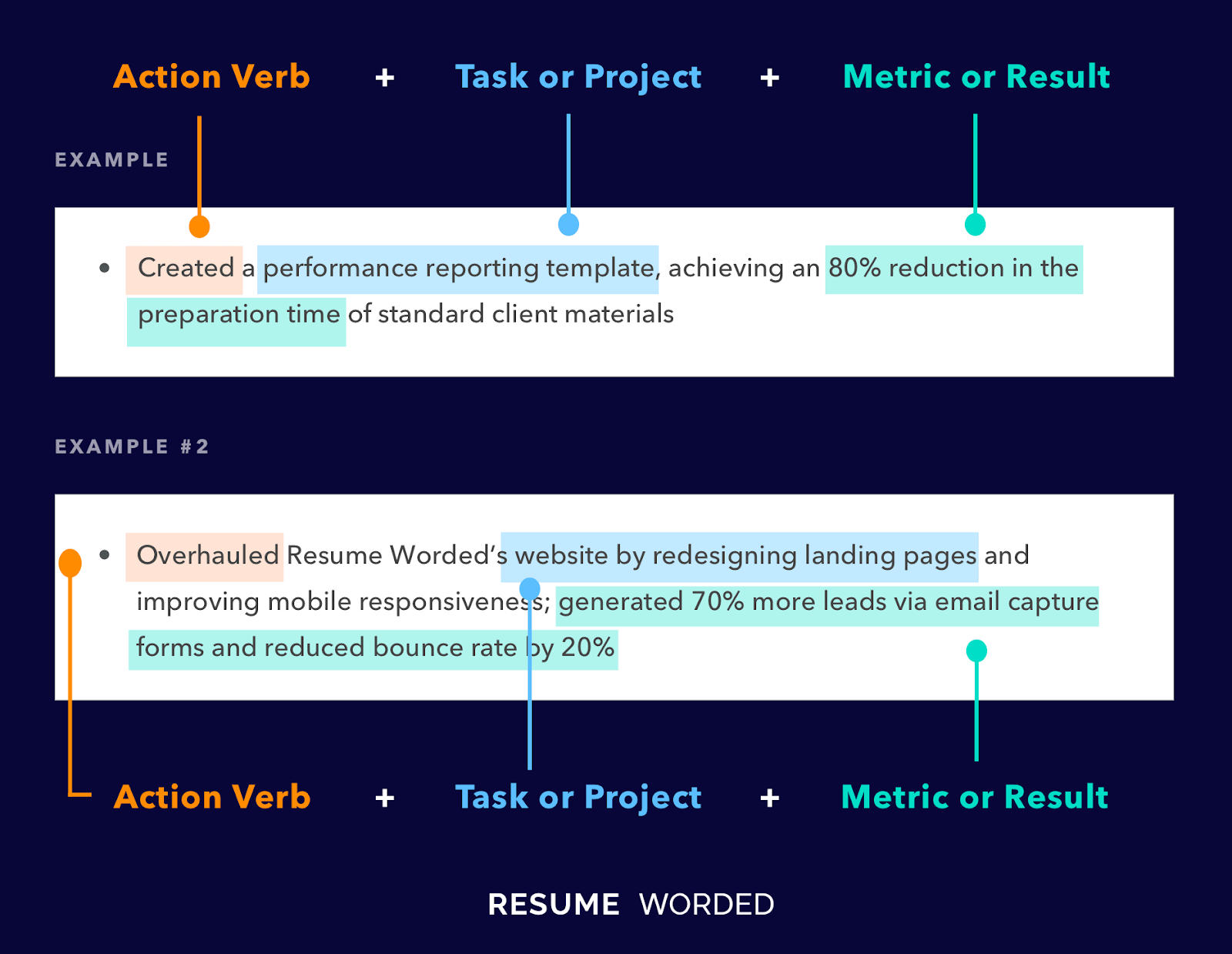
Cut the soft skills
Soft skills such as leadership, motivation, and communication are all things employers are actively looking for in a successful candidate, but simply writing these things on your resume is no longer a best practice.
Remove soft skills from your resume and focus instead on hard skills that can be quantified through training and experience, demonstrating your soft skills instead through work history examples.
For example, to show that you have leadership experience, write that you “led a team of 25 people to improve sales” or “trained and mentored new employees.” This shows a recruiter your skills instead of simply telling them.
Choose a simple design
It’s a popular misconception that a fancy-looking resume will help you stand out. In fact, complicated layouts can distract attention away from your words, and unconventional formatting can interfere with ATS.
Complex layouts may look good on your computer, but remember that not all files look the same when opened on different systems. What looks good to you might look like a mess when sent via email or uploaded online.
Keep your resume simple and clean by using an ATS-optimized template. Stick to standard fonts, one or two-column layouts, and stay clear of complex graphs, graphics, or images. Ensure your file is a standard format, such as .doc, .docx, or .pdf, and use a resume scanner before sending your resume to test whether ATS software can read your chosen layout.
Include only the essential sections
Part of cutting the fluff and keeping your resume short is about trimming your resume down to only the most essential, impactful information. This includes your contact information, resume summary, key skills, work experience, education, and qualifications (generally arranged in that order).
Only include additional selections, such as volunteer experience or additional achievements, if they are specifically relevant to the position, and stay clear of unnecessary sections that will clutter your resume, such as hobbies, interests, or affiliations.
Get actionable advice on areas you can improve your resume, or sections you can remove, by uploading it to our Score My Resume tool, to see how your resume stacks up against the competition.
Replace objective statements with a resume summary
Objective statements are a thing of the past. Remember, recruiters are not interested in what they can do for you but rather what you can do for them. Improve the impact of your resume by replacing vague objective statements with a concise and tailored resume summary, highlighting your relevant skills and experience.
Here is an example of a vague objective statement that has been transformed into a powerful summary.
Objective Statement: Seeking a challenging position to utilize my skills.
Summary: Award-winning graphic designer with 5+ years experience, known for increasing customer engagement by 20%, looking to apply creativity and leadership skills at ABC Media.
Related: Objective or Summary for Your Resume? Everything You Need to Know in 2024
Use a reverse chronological format
Reverse chronological format is a fancy way of saying that you should write your most recent experience first. Modern recruiters expect to see this as it highlights your most recent accomplishments and up-to-date skills and is the most ATS-friendly way of ordering your resume.
Focus on recent experience
You do not need to include every job you ever had on your resume. Generally, if a job is more than 10-15 years old, consider removing it from your resume unless it is specifically relevant to your application or you don’t have any more recent experience that highlights the same skill.
Include only your most recent education, certificates, and training courses and your highest level of education, such as a diploma, degree, or master's. Try to only include courses and certificates from the last 5-10 years, as Highschool achievements and courses more than 20 years old tend not to be relevant to the work you are doing now.
